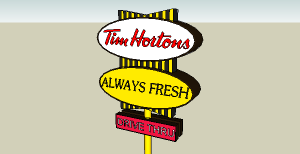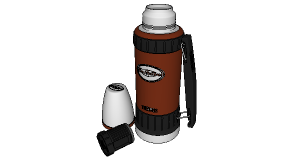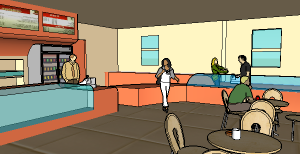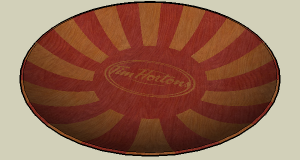All render engines recognize lines when a model is imported, and most to all professional render engines out there are able to render the lines, if you know how; thus, there would be no need for such a script. 
If you tell me what render engine you're using, I'll be happy to help you achieve a rendered wireframe image. 
Posts
-
RE: Render Line Script?
-
RE: [Plugin] Proper Animation V1.08 Beta(Updated 14/11/10)
This looks like a great plugin!

-
RE: Do you know what YOUR name means?
Jonathan
@unknownuser said:
It is of Hebrew origin, and its meaning is "gift of God". Related to Nathan. Biblical: the son of King Saul, Jonathan was noted for his manliness, generosity, and unselfishness. He saved David's life when Saul would have killed him.
I can live with that

-
RE: [Tutorial] Seamless textures in Photoshop
Pilou, if you mean the finished textures, the ones I posted are just a scaled down example.

The original size of the finished textures were 1200x1200.
-
RE: [Tutorial] Seamless textures in Photoshop
Sorry, I don't know of any.

There are many standalone applications out there like crazybump (although I'm not sure if it's compatible with Mac) that make bump, normal, displacement, reflectivity, specularity, and ambient occlusion maps.
-
RE: Fiat 500 (animation added on page 3)
I LOVE it!!


Damn! I can't think of anything else to say...
-
RE: Fiat 500 (animation added on page 3)
I'm intrigued by your stone texture. Is there a parallax map applied to it or is it just regular texture at a convenient angle?
BTW, I love the undersaturated tones of these images. Keep it up.
-
RE: Fiat 500 (animation added on page 3)
Wow! Looks very realistic
 .
.
My favorite is the last (indigo) one... but the angle is kind of trippy.
-
RE: A Fun Little Game, Part the Third
Granted, but now your revision clouds wont look nearly as realistic.
I wish I had a car.

-
RE: [Tutorial] Seamless textures in Photoshop
Oh, sorry.
 It can be downloaded from Kerkythea's "scenes" directory.
It can be downloaded from Kerkythea's "scenes" directory. 
-
RE: [Tutorial] Seamless textures in Photoshop
Ray: When you're in the material editor, delete your diffuse material, then right click it and select "add bitmap". You can then look for the texture on your hard drive. The same thing goes for your bumpmaps.

-
RE: Hello and help with kerkythea :D
Hi, recon. The obj problem is a flaw with the model; if you import it in any other program and it will appear the same... the only real way to fix this is to just rotate your model
 .
.
I'm not sure what you mean about messed up vertex's...
perhaps the model is not smoothed or it is smoothed too much. If this is the case, simply right click the model name and in the smooth tab, select your preferred angle of smoothing.
If you need some extra help with KT, there are a bunch of good tutorials in the tutorial repository.
-
RE: [Tutorial] Seamless textures in Photoshop
That's true

I tried reducing the frames by more than half, resizing it to 30x30 and optimizing it to 3 colors and it was still too large.
So I'll just keep the still for this forum.
-
RE: [Tutorial] Seamless textures in Photoshop
I think it was Magic Morph (it was a long time ago, though
 )
) -
RE: [Tutorial] Seamless textures in Photoshop
 I get that a lot.
I get that a lot.
I wanted to put the full avatar (the one I use in the KT forum), but the file size is too large:
-
[Tutorial] Seamless textures in Photoshop
I posted this in the Kerkythea forum. Here it is for anyone who needs it.
 (The last few steps are for rendering
(The last few steps are for rendering  )
)Ok, so here's how to make a material from scratch. If you take a picture yourself, try to line it up as best you can. DO NOT use the flash -- we want the texture to be illuminated using a fake light, not a picture of a real one. Try to be at a good distance when taking the picture. You don't want a brick wall texture with only one brick, because the tilling would be noticeable, but you also don't want a texture with fifty-million bricks in it because no camera is that high quality. Lastly, do not use the zoom. Zooming in will cause distortion which will be harder to get rid of in Photoshop.
If you see a picture on the internet that has a material you REALLY want but is not lined up, that's Ok.
I took a picture from the internet of a room with a wood floor that a want.

The first thing to do is to isolate the wood. To do this, we use the crop tool marked in red. Make sure the perspective is checked, also marked in red.

Position the... umm.. cropping square?
 ...so that the dotted lines line up with the direction of the wood. It doesn't have to be perfect, but do your best.
...so that the dotted lines line up with the direction of the wood. It doesn't have to be perfect, but do your best.
Double click to confirm the cropping and you should be left with a texture. Make sure the texture is all straight and lined up. You can do this by clicking and dragging the rulers (at the side and top of the page) to various points in the texture. Just keep cropping the image until you're satisfied. Turn on the grid (view > show > grid) to make sure.

The text thing to do is apply a high pass filter. A radius of about 80 is good for textures because it keeps a lot of the the shading/colors.
The high pass filter makes the hightones and the shadows of your picture even out. It also reduces shininess that might have been left over from the picture. We do this- So that the image is easier to make seamless
- So that when it is seamless, the tilling is un-noticeable (which is the flaw with many textures)

Desaturate the image so it will look better when we color it.

Now we color it. You can choose any variation of colors that you want. I chose one yellow, two reds, and made it slightly darker to produce a hardwood color.

Check out the size of your image. Remember the width and height for the next step.

Now it's time to make the texture seamless. Offset the image, making the width and height exactly half of the width and height of your image. This makes the left side of your image appear in the center, followed by the right side, and vice-versa with the top.

Now, you can use the patch tool or the clone tool to make your image seamless. The clone cool copies a part of an image, but instead of pasting it somewhere else, you can brush it somewhere else. Hold ALT to select a source image (an image that looks almost identical to the part you're going to fix) and simply brush over the part in your image that looks noticeable.
The patch tool works as well. Simply outline the "unseamless" part in your image and click-and-drag it to a seamless part. It will automatically heal the seam.
Once seamless, fix any part that is supposed to be lining up.

Offset it one more time so it's back in its original placement. Make sure everything looks natural.
Finally, you're done. Your new texture should look something like this:
Let's take a look at it in action, shall we?

Sweet! Now let's make the bumpmaps.
Take your texture and apply the "photocopy" filter. I find that this is the best and fastest way of doing a bump map. If you want a sharper bump, you can apply a threshold filter (I think it's Image > adjustments > threshold) then blur it slightly (filter > blur > Gaussian blur).
It should look like this:

You could also use a normal map (which I prefer).
I'm using the Nvidia normal map plugin. Set the scale to about 5 or 10. With anything over that, expect jagged, un-anti-aliased looking bumps.[img:2p5biavs]http://www.shane-fletcher.com/Gallery/Share/Jon/textut13small.png[/img:2p5biavs]
The normal should look something like this:
[img:2p5biavs]http://www.shane-fletcher.com/Gallery/Share/Jon/textut14small.jpg[/img:2p5biavs]
After you apply the bumps and texture (with some spec.) you get your finished mat:
[img:2p5biavs]http://www.shane-fletcher.com/Gallery/Share/Jon/textutmat.jpg[/img:2p5biavs]
Voilà!
-
RE: 5 Best inventions
Microwave.
I mean... cook a full dinner in a minute and a half with no chance of overcooking;
What's better than that?But I was watching a show on the Discovery channel about the top 10 inventions. Number one was the toilet (fair enough if you think about it).

 )
)


